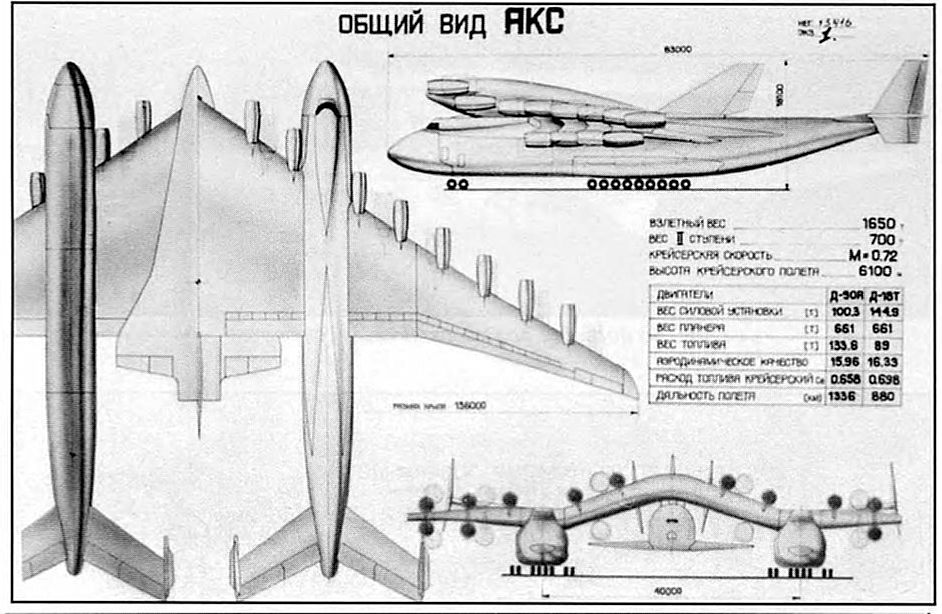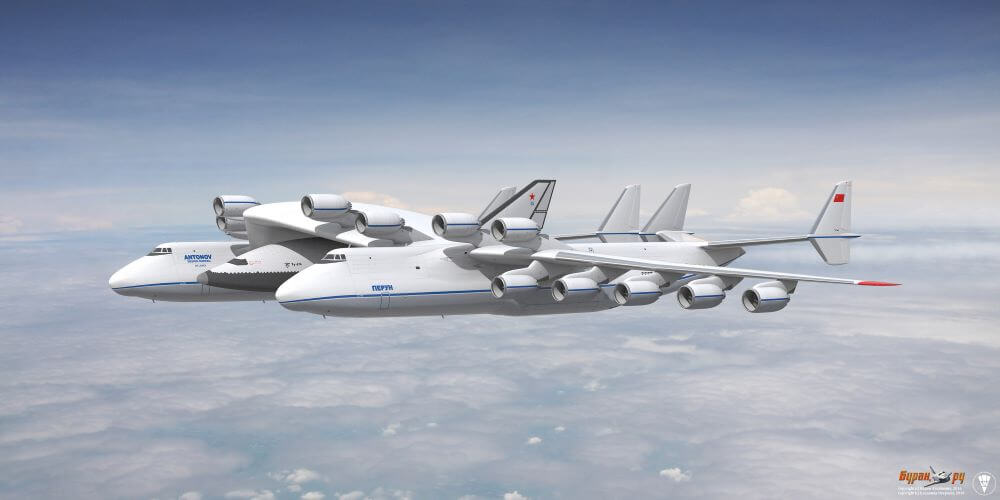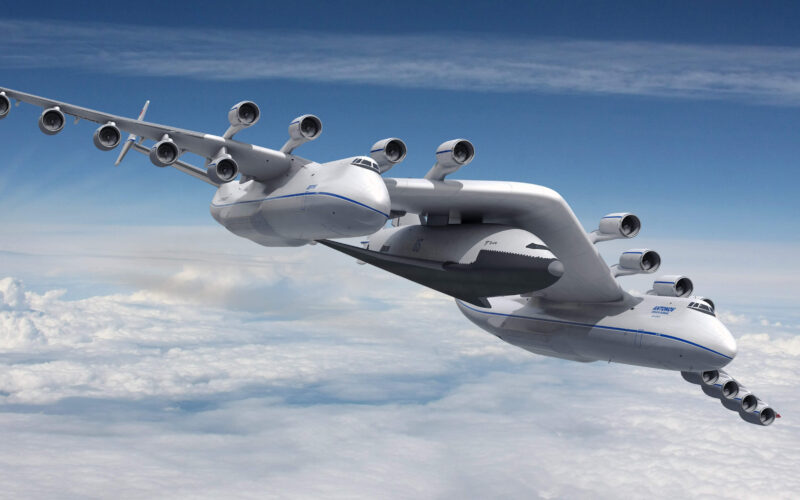When the Scaled Composites Stratolaunch took off to the skies, some aviation enthusiasts all around the world thought to themselves: hey I’ve seen this before.
Depending on the location of the said enthusiasts, they may have been reminded of numerous different projects to make a giant twin-fuselage aircraft and to launch spacecraft with them.
The basic idea of joining two regular fuselages together goes back to WWI. TheWWII era saw a boom in the popularity of the design and even some successful, mass-produced examples such as the Heinkel He 111Z and the North American F-82 Twin Mustang.
For transport planes, it was a way to increase an aircraft payload without a dramatic increase in cost and complexity. As such, twin airplanes were a perfect platform for aerial launch of space vehicles – an idea that would allow avoiding inefficient disposable rocket boosters, would not need expensive ground infrastructure, and would make launch schedules a lot more flexible. Coupled with a reusable space vehicle – such as a spaceplane – it could make the cost of spaceflight incredibly cheap.
That was the premise behind Conroy Virtus, a NASA program started in 1973. It considered modifying one of large, but accessible planes – the Boeing B-52 Stratofortress, the Lockheed C-5 Galaxy and the Boeing 747 were primary candidates – to have two fuselages, with a predecessor of the Space Shuttle carried under a mid-section of the wing.
That project was deemed impractical and got discontinued later in the 70s. It had its fair share of craziness, but pales in comparison with what happened in the Soviet Union just a decade later.
Doubling down
The Antonov An-225 Mriya was an enlarged, upgraded An-124 Ruslan, adapted to carry Buran space shuttle. Yet another spaceplane was designed to perform aerial launch from its back under the MAKS program, but it was too small to be practical for delivering cargo to orbit.
So, Tupolev design bureau proposed an upgrade – a single-stage orbital airplane (OOS). Similar in size to the Space Shuttle and Buran, but with a smaller payload of 10 tonnes, it would carry its own rocket engines and fuel supply from the stratosphere-up.
To reach that stratosphere, it would need a mothership of yet-unheard proportions, with roughly twice the size and the capacity of the An-225.
Strapping two Mriyas together seemed like a natural solution to such a problem.

The AKS, an acronym for “aerospace system”, was a placeholder name for this crazy project that never went into the stage where it would acquire a name of its own. Just one of many proposed Soviet aerospace systems at the time, it was barely anything more than a possible solution to a problem of getting the OOS to the required altitude.
Despite the early termination stage and a lot of uncertainty, we can – and should – admire the audacity of engineers. Eighteen D-18T turbofans with a combined thrust of 421,740 kgf would have been dotted around plane’s wings, with an option to employ larger power plants if those become available. The take-off weight, indicated in some sources, was 1,650 tones (3.6 million lb), which is over three times more than the Scaled Composites Stratolaunch. 700 tones (1.5 million lb) of those was the weight of the OOS spaceplane carried under the mid-section of the wing.
The wingspan of 153 meters (502 ft) is over twice that of the Boeing 777X (with wingtips unfolded) and a wheelbase of 40 meters is just slightly smaller than the minimum runway width of code-4 airports according to ICAO recommendations.
Hard reality
These numbers shine a light on why this aircraft was never built. The premise of aerial launch being less demanding on ground infrastructure goes out of the window if you need runways the size of cities. The maintenance cost for such an aircraft is barely imaginable and all of this is assuming that the airplane – with truly unbelievable stress on the mid-section of its wing – could actually have been built with the 80s technology.
One of many selling points of the Scaled Composites Stratolaunch was incredible advancement in materials that allowed for such a plane to be built. Its composite wing could support a payload of 220 tonnes, far cry from the OOS’ 700 tonnes. Massive leaps in advanced material manufacturing would have to be made to make the double Mriya fly.
In the late 80s, the Soviet Union had neither capabilities nor a need to make those leaps. So, the twin-fuselage An-225 AKS remained in a proposal stage. It was followed by a similar, even more gargantuan Molnyia-1000 Heracles project, which was arguably more realistic and fared slightly better, its development dying out only in the late 90s.

(Image: Вадим Лукашевич / Владимир Некрасов / Buran.ru)

